Are Colder Cities Safer Cities?
![Hamilton By Nhl4hamilton | Chit-Chat [Public domain], from Wikimedia Commons](https://www.immigroup.com/wp-content/uploads/2018/08/320px-JacksonStreetHamilton.JPG 320w, https://www.immigroup.com/wp-content/webpc-passthru.php?src=https://www.immigroup.com/wp-content/uploads/2018/08/320px-JacksonStreetHamilton-300x225.jpg&nocache=1 300w)
Do you hate winter? Do you hate those dark cold nights that stretch on and on and leave you with what they call “cabin fever”? Do you hate scraping the snow and ice off your windshield or slipping and sliding down a sidewalk on your way to catch a bus or train to work? Do you pine, not for the fjords like the Norwegian Blue Parrot, but for warm climates where you and your soul can bathe in sunshine?
Get over it.
Do you hate winter? Do you hate those dark cold nights that stretch on and on and leave you with what they call “cabin fever”? Do you hate scraping the snow and ice off your windshield or slipping and sliding down a sidewalk on your way to catch a bus or train to work? Do you pine, not for the fjords like the Norwegian Blue Parrot, but for warm climates where you and your soul can bathe in sunshine?
Get over it.
You’re just a spoiled kid who doesn’t appreciate what she or he has. Cold seems to come with a lot of the better countries in the world. Scandinavian countries, for example. Or North America, at least north of Kansas City and California. Cold must be good for you, right?
In other words, if you’re looking for the kind of city to settle down in and earn a good living in, and maybe raise your family in, shouldn’t you be willing to take a little cold? Or do a few cities in places like Sweden or Canada prove the exception to the rule, and in fact, most colder cities are like Vladivostok: cold, isolated, grimy, and unfriendly?
To find out, we’ll dive back in to Numbeo’s Quality of Life survey, the one we used in Cheap, Hot and Dangerous.
See the Top 15 Cold but Safe Cities
But this time we’ll be looking for cities that are:
Cold
By cold we mean that the average low in January in the city must be below -5 C°. On the Koppen Climate Classification system, all of our cities (except for one example) were under the D or cold continental classification. In the Koppen scale, climates are classified by a 3-letter symbol that neatly summarizes the climate’s main features. It works like this.
- The first letter (capitalized) indicates which of the following major climate groups the climate belongs to:
- A (tropical), B (dry), C (temperate), D (continental), E (polar).
- The second letter (lower case) indicates the precipitation pattern:
- s (dry summer), w (dry winter), f (without a dry season).
- The third and final letter (lower case) indicates how much heat there is during summer (with the exception of d):
- a (hot summer), b (warm summer), c (cold summer), d (very cold winter).
Expensive
By expensive we mean that on Numbeo’s cost of living index the city should be above 50 (with one glorious exception) which means it should be at least 50% as expensive to live in the city as it is to live in New York City. But as well, your purchasing power in that city should be (with one glorious exception) at least 50 on Numbeo’s scale, which means that you can buy 50% of what a New Yorker can buy on a typical salary in that city.
Safe
By safe we mean that the safety index in Numbeo should be at least 50. The safety index is the inverse of the crime index which measure how probable you think it is that you will be a victim of a crime. The higher the safety index, the safer the city. There are several exceptions to this rule that we’ve included, and they may surprise you.
Safety vs Purchasing Power
As we’ve shown in Cheap, Hot and Dangerous, cities with better levels of safety tend to have higher purchasing power indices, which means a safer city pays better salaries that you can buy more stuff with.
So safe is good, not just because not getting mugged or carjacked is good, but because safer cities are cities where you can earn a decent living and start saving for that dream of every family: buying a house. Which brings us to a related metric on our list of Cold, Expensive, and Safe cities: the income to home price index that measures how many annual salaries it takes to buy an average home. Nearly all our cities have an index below 10, but a couple do have indices over 10 – especially one glorious example.
Now, we previously found out that the hotter it gets, the safer the city gets. That is, when we considered warm to hot cities, we found that some of the safest cities were some of the hottest ones. Will we find the same trend if we examine colder cities? Let’s find out:
Remember that the climate index is a measure of how residents view their climate and a high score generally means that a city has a mild, not-too-hot-not-too-cold, climate. So, with our group of colder cities, the lower the climate index, generally the colder the climate is.
Here we have a slightly unexpected result. The colder it gets – within our group of cold cities – the less safe it gets. This is mostly due to some cities in the West and Northwest of Canada and the United States. Cities like Winnipeg and Regina currently have problems with relatively high rates of crime, as does a city like Anchorage in Alaska. Is this because colder cities tend to be a little more remote and depend on natural resources for their industries, rough-hewn places with drunken lumberjacks slugging it out? Or is it due to cultural problems with First Nations and a clash of cultures? Or is it also that these cities – some of them affected by booming natural resource industries have a lot of young men who like to party hard after work? Regardless, crime can still be a problem, even in a cold, first-world city.
Purchasing Power vs Climate
Next, while our cold and relatively safe cities are expensive with fairly high cost-of-living indices, what is the relationship between purchasing power – what your salary buys you compared to what an average salary buys you in New York City – and climate? Does a colder city mean your salary goes further, despite the high cost-of-living?
Here we see that within our group of cold cities, relative climate levels don’t seem to change purchasing power one way or the other. Most of our cities are above 100, regardless of how cold they are, which means your average salary gets you more than an average salary in New York City. That is a good indicator of the kind of city you should consider moving to. There are 2 outliers – one of them glorious – which have purchasing power levels well below 100, and both cities are in the former Soviet Union.
Technology vs Climate
Finally, how does climate affect technology? As a simple proxy for technological advancement, we took broadband speeds (downloading) for each city. How does broadband speed change with climate? Let’s see.
So, what do we have here? Our colder cities do indeed seem to suffer from frozen connections. In other words, colder cities in our group tend to be more remote and further from their countries principal infrastructure. The data points can be plotted on a moderate upward sloping line. That is, if you take out the two outliers – one of them a city with perhaps the world’s fastest internet connections; the other a glorious exception.
Top 15 Cold, Expensive and Safe Cities
Having reviewed our data, it’s now time to put together our list of 15 Cold, Expensive & Safe Cities. We used the climate, purchasing power, and safety indices from Numbeo; along with the average low for January and the average speed of broadband connections.
15. Yekaterinburg, Russia
by Svetlov Artem / Wikimedia Commons / CC BY 3.0
Known as Russia’s Gateway to Asia, the city is located east of the Ural Mountains. Cold, but not as cold cities like Regina or Winnipeg. Not all that safe, but safer than Regina or Winnipeg. With some of Russia’s tallest buildings and an internet connection that’s actually not too shabby at 16 Mbps, all considered. Your salary, however, only gets you about 53% of what it would in NYC.
Score: 125
14. Almaty, Kazakhstan
by Edgarpo01 / Wikimedia Commons / CC BY-SA 3.0
: Our glorious exception deep in the heart of Central Asia, making for a proud city benefiting a great republic like Kazakhstan. The purchasing power sucks, the safety is near the bottom of our group, but not the worst, and it’s not the coldest either, sitting somewhere in the middle. But the internet connection is awful at 4 Mbps.
Score: 148
13. Regina, Saskatchewan
by Daniel Paquet / Wikimedia Commons / CC BY-SA 2.0
Lucky 13 for what is one of Canada’s coldest major cities in winter. Purchasing power is pretty good. Safety is awful, nearly the worst of our group of cities. The Climate index is the lowest of our group – people in Regina hate the weather. And the internet connection is only twice as fast as the glorious city of Almaty, a lousy 9 Mbps. Time to lay down some more cable, guys. Get the tractors running, please!
Score: 161
12. Winnipeg, Manitoba
by Jdiemer / Wikimedia Commons / CC BY-SA 3.0
The worst safety numbers of our group. Several points lower than Almaty, in fact. The coldest winters of our group, slightly colder than Regina’s. But people in Winnipeg are happier about the weather it seems, so their Climate index is slightly higher than Regina’s. And the purchasing power is better than their sister city of the prairies. But at least their broadband connection is a moderately respectable 13.5 Mbps.
Score: 178
11. Anchorage, Alaska
by Frank K. / Wikimedia Commons / CC BY 2.0
Safety not very good. Purchasing power is ok, but not as good as many North American cities. Not as cold as Winnipeg or Regina, and with an internet connection that’s 16 Mbps. Overall a step up in our rankings.
Score: 186
10. Edmonton, Alberta
by Denni / Wikimedia Commons / CC BY-SA 1.0
Good purchasing power levels – your salary goes far here. Pretty good safety levels, but nothing to cheer about. Weather that’s almost as bad as Regina’s and Winnipeg’s. And the internet connection? About the same as Winnipeg’s, at 13 Mbps. Plus Vancouver’s a little closer by train, plane, or car. As are some of Canada’s most beautiful national parks.
Score: 219
9. Halifax, Nova Scotia
by Alexk001 / Wikimedia Commons / CC BY-SA 3.0
Where your dollar goes a reasonable way, but only as far as someone in New York. Where the safety is pretty good, but not the best. Where the weather is pretty cold, but the folks don’t mind. And where you get a very good internet connection: 23 Mbps!
Score: 232
8. Kelowna, British Columbia
by Darren Kilby / Wikimedia Commons / CC BY-SA 2.0
Nothing that you can complain about. Every index is in the top half of our table, and the internet speed is 15 Mbps. Everything’s good but nothing’s great except the scenery around this beautiful BC town.
Score: 233
7. Montreal, Quebec
by Gjm130 / Wikimedia Commons / CC BY-SA 3.0
6. Minneapolis, Minnesota
by Bobak Ha’Eri / Wikimedia Commons / CC BY-SA 3.0
Great purchasing power levels, a safety index that’s middle-of-the-pack, and broadband speeds of 21 Mbps. It’s cold but people put up with it. Nice. Very nice. Minnesota nice.
Score: 244
5. Hamilton, Ontario
Very good purchasing power, pretty good if not great safety and people don’t mind the weather at all. Who would have thought that Canada’s steel town would be a great cold weather city? Well, it is.
Score: 251
4. Oslo, Norway
by ChrisO / Wikimedia Commons / CC BY-SA 3.0
Damn Norwegians handing out Nobel Peace Prizes and building windmills in subarctic weather. Who do they think they are? The purchasing power is good but only slightly better than NYC. Not a bargain city and housing is expensive. Safety is good, but not as good as you’d expect in a Scandinavian city. But the internet connection is world class. 40 Mbps. Take that Seoul!
Score: 257
3. Denver, Colorado
by Hoggs555 / Wikimedia Commons / CC BY-SA 3.0
2. Ottawa, Ontario
by G. Baranski / Wikimedia Commons / CC BY-SA 3.0
Jokes about the train to Montreal being the best thing about Ottawa are long gone. It has broadband connections that beat both Toronto and Montreal’s at 23 Mbps. The weather is cold, but not as cold as Regina or Winnipeg. And the purchasing power and safety levels are excellent. Lots of parks and overpaid bureaucrats plus a pretty good tech sector. Just the kind of city to raise a family in.
Score: 258
1. Quebec City, Quebec
by Datch78 / Wikimedia Commons / CC BY 3.0
The weather is colder than Montreal and Ottawa. The internet connection is a little slower. But the purchasing power and safety index levels are world class. A safe, beautiful and well-paid city – the provincial capital of Quebec – where a breathtaking view of the Saint Lawrence River and gorgeous stone architecture make a cold and perfect place to live. Oh yes one more thing. Il faut parlait en francais. Sorry.
Score: 272
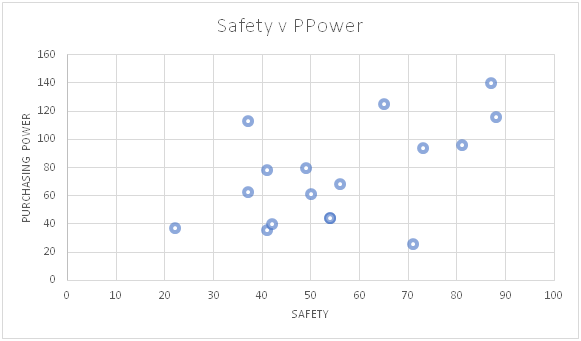
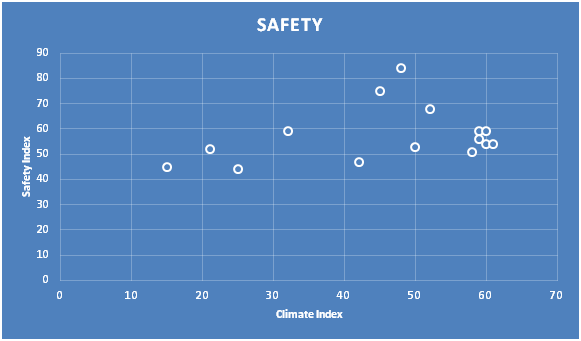
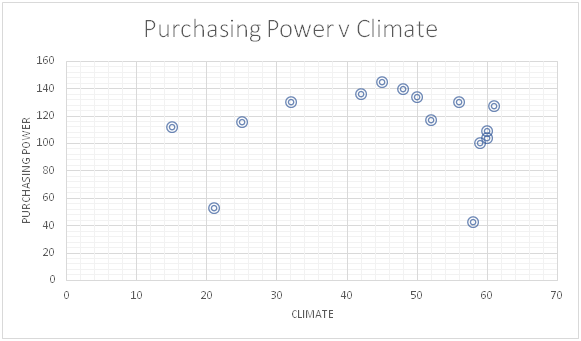
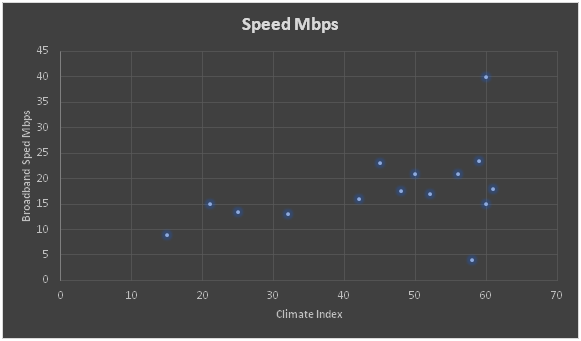
![by Svetlov Artem [CC BY 3.0 (https://creativecommons.org/licenses/by/3.0)], via Wikimedia Commons](https://upload.wikimedia.org/wikipedia/commons/thumb/0/01/Architecture_of_Ekaterinburg%2C_Russia._-_panoramio_%28115%29.jpg/640px-Architecture_of_Ekaterinburg%2C_Russia._-_panoramio_%28115%29.jpg)
![Almaty By Edgarpo01 [CC BY-SA 3.0 (https://creativecommons.org/licenses/by-sa/3.0)], from Wikimedia Commons](https://upload.wikimedia.org/wikipedia/commons/thumb/2/2e/Almaty%2C_Kok-tobe_exposition_3.jpg/640px-Almaty%2C_Kok-tobe_exposition_3.jpg)
![Regina By Daniel Paquet from Regina, Canada (Regina SaskatchewanUploaded by xnatedawgx) [CC BY-SA 2.0 (https://creativecommons.org/licenses/by-sa/2.0)], via Wikimedia Commons](https://upload.wikimedia.org/wikipedia/commons/thumb/e/e7/Regina_Saskatchewan_skyline.jpg/640px-Regina_Saskatchewan_skyline.jpg)

![Anchorage By Frank K. from Anchorage, Alaska, USA (View of Anchorage from Earthquake Park) [CC BY 2.0 (https://creativecommons.org/licenses/by/2.0)], via Wikimedia Commons](https://upload.wikimedia.org/wikipedia/commons/thumb/1/1b/Anchorage_from_Earthquake_Park.jpg/640px-Anchorage_from_Earthquake_Park.jpg)
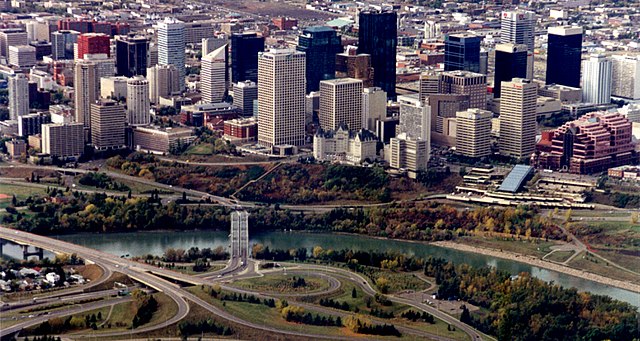
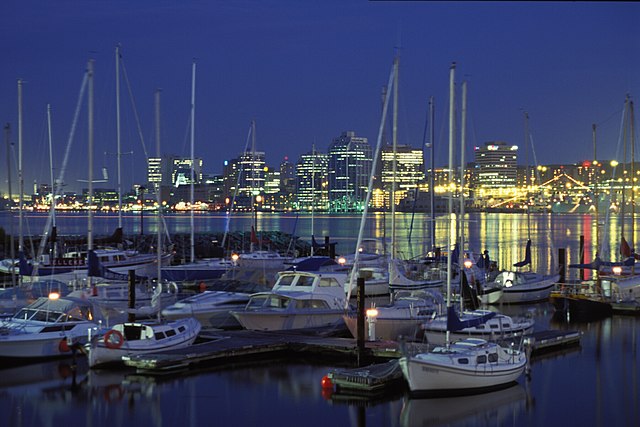
![Kelowna By Darren Kirby (bulliver) [CC BY-SA 2.0 (https://creativecommons.org/licenses/by-sa/2.0)], via Wikimedia Commons](https://upload.wikimedia.org/wikipedia/commons/thumb/5/5e/Kelowna_Skyline.jpg/640px-Kelowna_Skyline.jpg)
![Montreal by Gjm130 [GFDL (http://www.gnu.org/copyleft/fdl.html), CC-BY-SA-3.0 (http://creativecommons.org/licenses/by-sa/3.0/) or GFDL (http://www.gnu.org/copyleft/fdl.html)], via Wikimedia Commons](https://upload.wikimedia.org/wikipedia/commons/e/e6/Old_Port_of_Montreal_%28French-_Vieux-Port_de_Montr%C3%A9al%29.jpg)
![Minneapolis By Bobak Ha'Eri [CC BY 3.0 (https://creativecommons.org/licenses/by/3.0)], from Wikimedia Commons](https://upload.wikimedia.org/wikipedia/commons/thumb/e/e4/2008-0712-MPLS-panorama.JPG/1024px-2008-0712-MPLS-panorama.JPG)
![Hamilton By Nhl4hamilton | Chit-Chat [Public domain], from Wikimedia Commons](https://upload.wikimedia.org/wikipedia/commons/thumb/4/40/JacksonStreetHamilton.JPG/640px-JacksonStreetHamilton.JPG)

![Denver By Hogs555 [CC BY-SA 3.0 (https://creativecommons.org/licenses/by-sa/3.0)], via Wikimedia Commons](https://upload.wikimedia.org/wikipedia/commons/thumb/7/7b/Denver_Montage.jpg/408px-Denver_Montage.jpg)
![Ottawa By G. Baranski [CC BY-SA 3.0 (https://creativecommons.org/licenses/by-sa/3.0) or GFDL (http://www.gnu.org/copyleft/fdl.html)], from Wikimedia Commons](https://upload.wikimedia.org/wikipedia/commons/thumb/c/c0/Canada_Ottawa_Panorama.jpg/1024px-Canada_Ottawa_Panorama.jpg)
![Quebec By Datch78 (Commons File:Quebec city.jpg) [GFDL (http://www.gnu.org/copyleft/fdl.html) or CC BY 3.0 (https://creativecommons.org/licenses/by/3.0)], via Wikimedia Commons](https://upload.wikimedia.org/wikipedia/commons/thumb/d/dc/Quebec_city-Vieux-Qu%C3%A9bec.jpg/640px-Quebec_city-Vieux-Qu%C3%A9bec.jpg)